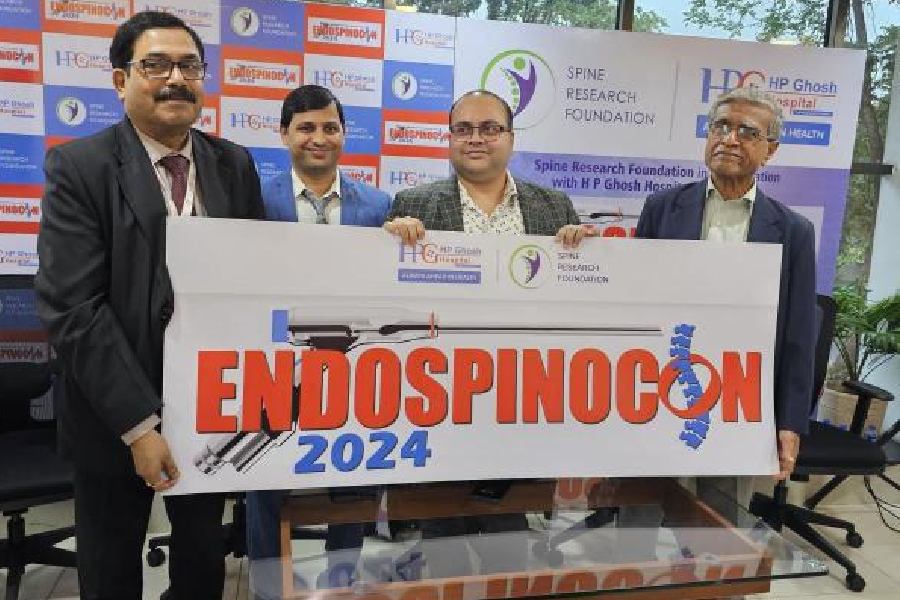A workshop on full endoscopic spine surgery will take place on Saturday at a DD Block hotel, where about 100 spine, neuro and orthopaedic surgeons will get training.
The one-day masterclass symposium at The Sonnet, being organised by Spine Research Foundation in collaboration with HP Ghosh Hospital in HB Block, is being touted as the first training opportunity of its kind in eastern India.
“Dr Satishchandra Gore, a pioneer of endoscopic spine surgery in India, will be coming from Pune as the chief faculty. There will be six other faculty members excluding myself. The schedule includes workshops for live demonstrations, lectures and interactive sessions aimed at equipping medical professionals with the latest techniques in full endoscopic spine surgery,” said Dr Amitava Biswas, the symposium organising secretary who is also the host faculty.
An 8mm hole in the waist is all it takes to insert an endoscope (an inspection tube with a light and a camera) and do a spine surgery. “The technique is common in abdomen surgeries. But it can be applied to the spine as well, with minimal post-operative discomfort and reducing recovery time to about 24 hours. The surgery is not so common in eastern India,” Dr Biswas said.
“There is a perception that Calcutta is lagging in medical education. But that is not true at least in spine treatment. About 40 former students of Spine Foundation and Spine Research Foundation are doing well across the country. Sometimes we get calls from our students saying that a patient who did not have the confidence to get the treatment done in Calcutta had gone to them,” laughed Dr Indrajit Roy, a trustee of Spine Foundation and an advisor to Spine Research Foundation, who is now a consultant neurosurgeon at HP Ghosh Hospital.
Every hospital, he pointed out, undertakes countless laparoscopic surgeries, especially for gall bladder removal and hernia repair.
“For abdominal surgeries, the approach is easier as they involve cutting through skin, body fat and tissues. But there are many small bones in the spine, so the access is tough. Another restriction is one cannot make more than one hole. The spine is a very sensitive part of the body. Nerve tissues cannot be touched, leave alone poked. The technique is most useful for discectomy, in which an intervertebral disc comes out as a bulge and presses on an adjacent nerve root. It is the commonest cause of chronic back pain radiating down the leg and the hip,” he said, explaining the need for the surgery.
Attendance in the symposium will fetch participants a credit of five and half hours in continuing medical education, which has been mandated by the National Medical Commission for registered medical practitioners in India as a part of continuing professional development. A minimum of 30 credits in five years is required for the renewal of the medical licence for doctors aged under 65 years.










